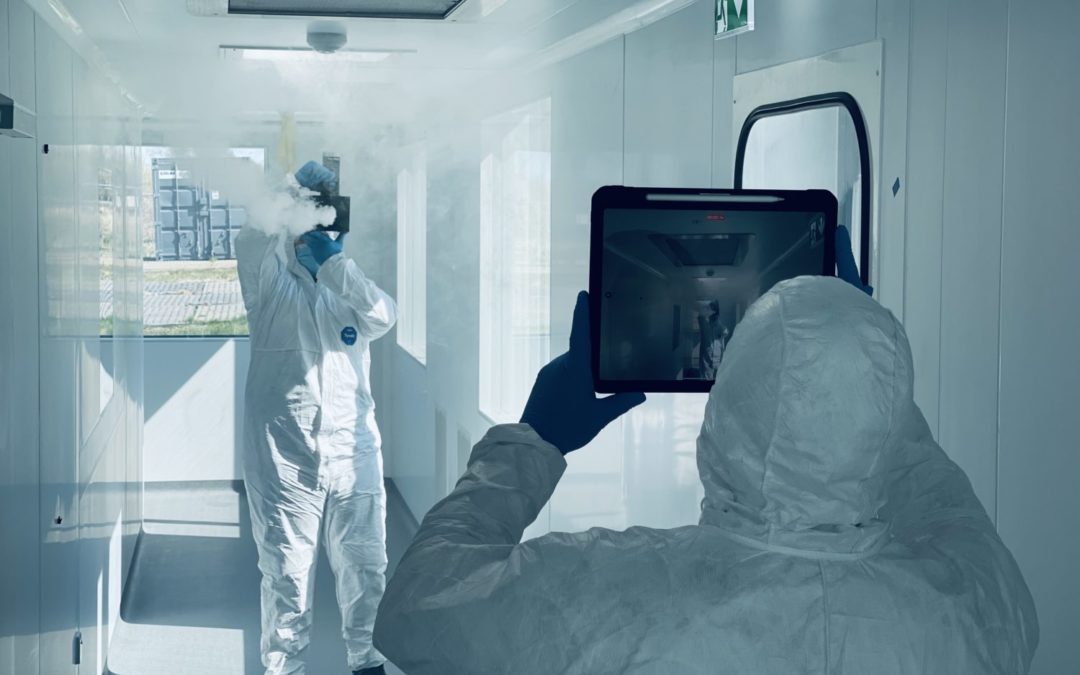In the cleanroom industry, there are many different quality standards that both manufacturers and facilities managers must be aware of and comply with. We’ve already discussed ISO standards and Federal 209E standards, even USP standards — but one we haven’t discussed much is GMP standards.
Let’s explore what GMP standards are, what they entail, who needs to comply with them, and more.
What Are GMP Standards for Cleanrooms?
GMP stands for Good Manufacturing Practices, which is a quality management system used mainly by medical and pharmaceutical manufacturers to ensure a controlled cleanroom environment. In the United States, GMP standards are established and enforced by the Food & Drug Administration (FDA), but in other countries they’re controlled by different regulatory bodies.
Although it’s important to be aware of minor differences across the globe, the main goal of GMP standards remains the same: to minimize the risks of microbiological, particulate, and pyrogen contamination during preparation and sterilization of medicines or medical devices. This helps ensure that products are of consistent high quality, are appropriate for their intended use, and meet the requirements of product specifications.
In order to ensure this level of control, GMP standards address cleanroom issues like:
- Record keeping and documentation
- Personnel qualification
- Equipment verification
- Process validation
- Sanitation and cleanliness
How Do GMP Standards Differ from Other Cleanroom Quality Standards?
GMP standards are different from other cleanroom quality standards, but none of them are mutually exclusive. Some cleanrooms need to meet multiple sets of standards in order to be fully controlled and compliant.
For the sake of brevity, we won’t discuss every type of cleanroom quality standard. Instead, we’ll focus mainly on how GMP standards are different from ISO standards since they’re the most common.
The biggest difference between GMP standards and ISO standards is that GMP standards are mainly used in medical applications. ISO standards, on the other hand, are commonly used in a diverse range of industries, from medical to automotive, plastic injection molding, and more.
Another difference between these two standard sets is that ISO standards distinguish nine “classes,” while GMP standards distinguish four “grades.” Here’s an overview of the four GMP grades:
- Grade A – A zone for high-risk operations that need the highest level of environmental control. It’s equivalent to ISO Class 5, both at rest and in operation.
- Grade B – A zone for aseptic preparation, filling, and compounding. It’s equivalent to ISO Class 5 at rest and ISO Class 7 in operation.
- Grade C – A clean area for less critical stages in the manufacturing process. It’s equivalent to ISO Class 7 at rest and ISO Class 8 in operation.
- Grade D – Another clean area for less critical stages in the manufacturing process. It’s equivalent to ISO Class 8, both at rest and in operation.
If you’d like a more detailed description of GMP/ISO equivalents, check out these cleanroom classification comparison tables from our partners at Connect 2 Cleanrooms (C2C).
Which Cleanrooms Need to Comply With GMP Standards?
As mentioned above, GMP standards are mostly used in medical and pharmaceutical cleanrooms. Any application that involves producing, filling, compounding, or packaging sterile medicinal products needs to comply with GMP standards. This could include cleanroom industries and applications like:
- Cell and gene therapy
- Medical device manufacturing
- Pharmaceutical manufacturing
- Radiopharmaceutical manufacturing
If you’re unsure if your cleanroom must comply with GMP standards, it’s best to consult with a cleanroom design and installation professional. They’ll be able to tell you which quality standards your space must be designed to accommodate.
An Overview of the GMP Cleanroom Qualification & Validation Process
Qualification and validation are critical components of GMP standards. These protocols help provide documented evidence that your cleanroom meets a high level of control, is compliant with all applicable standards, and will consistently yield high-quality products. GMP guidance calls for the following four stages of qualification and validation:
- Design Qualification (DQ), which verifies that your cleanroom design can meet all regulatory and process requirements.
- Installation Qualification (IQ), which verifies that your cleanroom is consistent with specified designs after installation.
- Operational Qualification (OQ), which verifies that your cleanroom equipment achieves specified operational requirements.
- Performance/Process Qualification (PQ), which verifies that your cleanroom equipment performs well together, in a cohesively controlled, repeatable state.
At first glance, this may seem like a lot of qualification stages to go through — and it can be! GMP qualification and validation requires a significant amount of effort, but it must be done before you can begin operations. If you’re looking to streamline the process, a reputable and experienced cleanroom manufacturer can support you.
GMP Cleanroom Example: RoslinCT
Want to see a GMP cleanroom project in action? Recently, our partners at C2C completed a GMP-compliant cleanroom suite for cell and gene therapy client RoslinCT.
The cleanroom suite consisted of 33 different rooms, the breakdown being:
- 3 Grade B cleanrooms
- 2 Grade C cleanrooms
- 15 corridors, lobbies, and changing areas (Grades B, C, D)
- Sample and packing area
- Cryostorage and vaporized hydrogen peroxide (VHP) staging area
- Training laboratory
- Waste room, warehouse, and plant room
- Stairwells, foyers, and bathrooms
- Offices and conference rooms
The large facility obtained full GMP qualification and now operates according to both US and EU GMP standards — ensuring consistent, high-quality results in the rapidly growing, life-saving field of cell and gene therapy.
If you’d like to learn more about this GMP cleanroom project, you can find the full project description here.
Build Your GMP Cleanroom With Angstrom Technology
Have questions about GMP standards and how they relate to your cleanroom design? Get in touch with our team at Angstrom Technology. As cleanroom design and installation experts, we’re happy to guide you through the GMP qualification and validation process and to ensure your cleanroom is built for safe, controlled operations.



